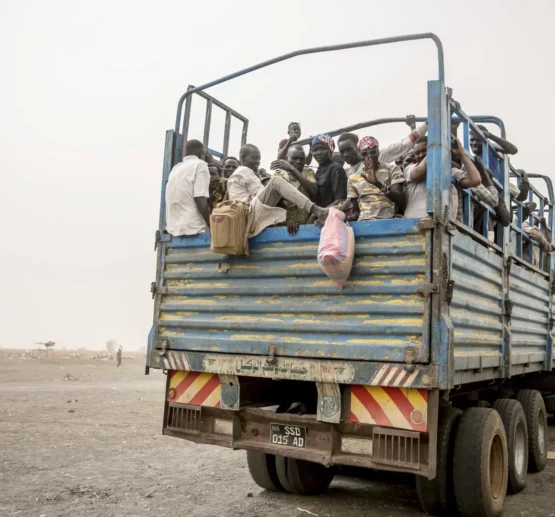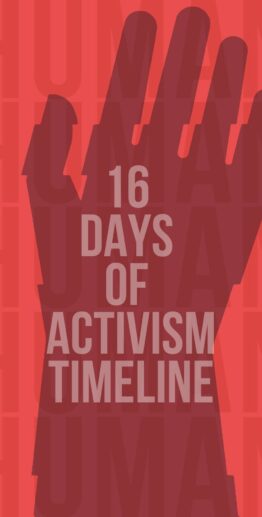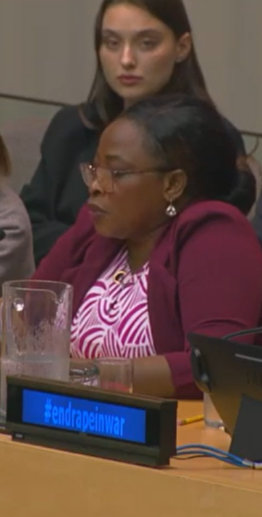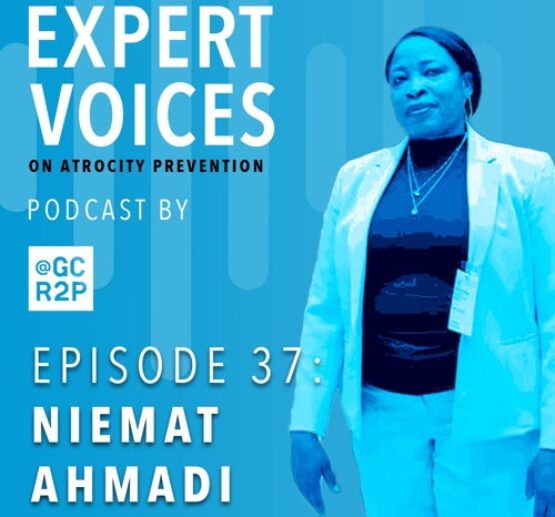Disintegration of Darfur
The international community is at present bearing witness—albeit with eyes largely averted and no willingness to act—to the disintegration of Darfur. This disintegration marks a new phase in the twelve years of catastrophically destructive conflict, with staggering numbers of civilians dying and displaced. Notorious Janjaweed leader Musa Hilal spoke for the Khartoum regime in August 2004, declaring as their joint ambition “changing the demography” of Darfur and “emptying it of African tribes.” To an extraordinary degree, the regime and its militia allies—primarily now the Rapid Support Forces (RSF)—have achieved their goals.

That the international community has no contingency plans to halt the current disintegration is unforgivably callous; that Khartoum has demanded that the UN Department of Peacekeeping Operations (UN DPKO) draw up withdrawal plans for the painfully inadequate UN/African Union Mission (UNAMID) in Darfur is ominous in the extreme; that Khartoum pays no price for its calculated chaos and destruction is the conspicuous reason millions of Darfuris are endangered.

UNAMID’s current authorization runs through June 2015; even should the Mission be re-authorized, Khartoum will insist that it be substantially reduced in size and the scope of its mandate. There will be resistance, if largely on face-saving grounds, from the UN Department of Peacekeeping Operations and perhaps France, Britain, and the U.S. on the Security Council (the “P3“). But they must contend with a China that will steer its own course in maintaining relations with Khartoum: Beijing has too much invested in Sudan to ignore what will certainly be increasingly strident demands from the regime that there be reductions in force size, scope of operations, and the civilian protection mandate. Moreover, Putin’s veto-wielding Russia poses an extremely serious threat to re-authorization: there is no substantial Russian commercial investment in Sudan, only profits to be made from continuing arms sales. The number of Russian MiG-29s, Sukhoi-24s, MiG helicopter gunships, and tanks the regime has acquired over the years represents the very worst in the international arms trade. And Putin will certainly relish the opportunity to thwart any action—including re-authorization of UNAMID—that is pushed by the P3.

The upshot is that the current rapid deterioration in security will only accelerate. The consequences of this deterioration are chronicled daily by Radio Dabanga, but by virtually no other news source.
Acceleration in the genocidal process is unmistakably clear from any number of these reports. What follows is the first in a continuing series of compilations containing the most telling dispatches from Radio Dabanga and occasionally other sources. They cannot, of course, be fully reflective of all Darfur’s horrors, but there must be some present reckoning. Some of the dispatches I have commented on in italics; others stand alone as horrifying revelations of what the non-Arab or African people of Darfur are now enduring on a daily basis.
When the mass graves are excavated, when families and villages are finally able to assess their losses in lives and livelihoods, when the devastation of agricultural farm-life is revealed, when the “changed demography” of Darfur becomes undeniable to even the most hardened cynics, there will be no excuses of ignorance about the scale of the genocide. We know now, now, that Darfur and its people are being deliberately destroyed by a regime still animated by its racist and Islamist ideology.

Although the need to survive at any cost has produced various pragmatic changes in its policies of destruction, radical Islam remains central to the project of the National Islamic Front/National Congress Party regime, as the insistence on maintaining a strategic relationship with Iran makes clear, along with support for various radical Islamic groups and jihadists. But survival matters most to these unsurpassably brutal men, and their efforts to ensure this are nowhere more consequential than in Darfur.
• Central Darfur’s Mukjar “horror movie after sunset,” Radio Dabanga, 31 January 2015 | Mukjar
Groups of the paramilitary Central Reserve Police (popularly known as Abu Tira) are terrorising the population of Mukjar, and the neighbouring camp for the displaced, in Central Darfur. Several residents of Mukjar told Dabanga on Friday that “for the past four days, the town turns into a horror movie after sunset.”
They related how large groups of Abu Tira gunmen arrived on Monday, and began raiding their homes, shops, or assaulting people on the streets. “They robbed and beat the people, and threaten to kill us under the pretext that we are supporting the rebel movements,” one of them said. “We have begged the UNAMID peacekeepers based in Mukjar to protect us, to no avail,” he added. The victims appealed to the Central Darfur state authorities to intervene, stop the abuses, and bring the assailants to trial.
Mukjar was formerly part of West Darfur before Khartoum contrived to create two artificial new Darfur states: “Central Darfur” and “East Darfur.” Among other things, this made it difficult to place just where various small towns are (or to use as easily the invaluable UN Darfur Field Atlas). But Mukjar is infamous for having been at the epicenter of the massacres of Fur men and boys in 2004, most notoriously Wadi Saleh. We know a considerable amount about these ethnically-targeted murders from reports by Human Rights Watch and Amnesty International. (See especially from Human Rights Watch: “Darfur Destroyed: Ethnic Cleansing by Government and Militia Forces in Western Sudan,” May 2004 Vol. 16, No. 6 [“Mass Executions of captured Fur men in Wadi Saleh,” page 21 ff., http://www.hrw.org/reports/2004/sudan0504/]). Tellingly, the politically corrupted UN Commission of Inquiry (2004 – 2005) did not investigate the massacres at Wadi Saleh and elsewhere in the Mukjar area, despite being given precise locations of the mass graves—ER.
• Ten villages torched in Darfur’s Jebel Marra, Radio Dabanga, 26 January 2015 | Golo
Ten villages in the area west of Jebel Marra were reportedly destroyed by fire today. More than 200 families, who fled from Golo and the surrounding villages, have arrived at the Nierteti camps for the displaced. According to Mustafa Tambour, the spokesman for the Sudan Liberation Movement, led by Abdel Wahid El Nur, government forces stationed in Golo started shelling the villages west of the Sur Reng rebel base, this morning. “The villages of Bardani, Takaro, Nouni, Tari, Tagana, Delgo, Tariya, Tero, Aradeiba, and Karma burned to the ground. “A number of people who fled the villages with everything they could take with them, were robbed by militiamen on their way to safer places,” the rebel spokesman said.

Tambour also reported that one of their reconnaissance units combing the area west of Sur Reng, found the body of Lt. Hanafi Hassan El Tileib, an administration officer of the paramilitary Border Guards stationed at El Geneina, capital of West Darfur. A sheikh of Nierteti North camp for the displaced informed Dabanga that more than 200 families have reached the Nierteti camps. “They told us that there are more people on their way to the camps, fleeing from the militia attacks on Golo and the surrounding villages,” he said, appealing to relief organisations to provide aid to the newly displaced.
It must be remarked that the level of detail provided by this invaluable source is truly extraordinary: village names, names of victims, of sheikhs and other camp leaders, and those responsible for many of the atrocity crimes are consistently reported in detail.
But the specific myriad incidents reported by Radio Dabanga have been confirmed in general terms by the improved UN Panel of Experts on Darfur in their newest report (23 January 2014); it notes in words that could have been written in 2004:
“a pattern of deliberate targeting of and/or indiscriminate attacks on civilians with actual or perceived allegiance to the armed opposition groups…” “The effects of this have resulted in 3,324 villages being destroyed in Darfur over the five-month period surveyed by the Darfur Regional Authority, from December 2013 to April 2014,” the report said. (Reuters [UN/New York], 23 January 2015)
“3,324 villages destroyed over the five month period survey”: this is staggering level of destruction, and although the UN Panel does not describe the ethnic patterns of destruction, we may be sure that—despite significant intra-Arab tribal fighting—the overwhelming majority of these villages were African. The violence in Darfur continues to be genocidal counter-insurgency, orchestrated by Khartoum—ER.
• Population “trapped” in Central Darfur’s Golo, Radio Dabanga, 31 January 2015 | Golo (Jebel Marra)
The Sudanese Air Force continued bombing the area of Golo, Jebel Marra, in Central [formerly West] Darfur, on Thursday. Many people fled to the town hospital and government buildings. Speaking to Dabanga, a resident of the Berdani district in the southern part of Golo, reported that the bombardments destroyed several houses in the neighbourhood. “Hundreds of people sought refuge in the town’s hospital, and the Golo locality offices,” he said. “We fear for our lives, also because members of the Rapid Support Forces and other militiamen are dominating Golo.
“We are trapped in the now overcrowded buildings, without food and water, and in constant fear of being attacked by militia forces, or bombed by an Antonov.” He appealed to the international community, and humanitarian organisations, to “intervene as soon as possible, and save the lives of those trapped in Golo.”
Golo and other areas in Jebel Marra have been under a humanitarian blockade that is now five years old. Recent military successes by Khartoum’s Sudan Armed Forces (SAF) and the RSF have made continued control of the Jebel Marra stronghold doubtful. We may be sure that where the SAF and RSF prevail militarily, there will be a great deal more village destruction, more tens of thousands of people displaced, and horrific mortality that no one is recording or even estimating—ER.
• Militiamen attack cars, camp in North Darfur, Radio Dabanga, 30 January 2015 | Jebel Marra / ZamZam IDP camp
Militiamen robbed two vehicles in separate incidents in western Jebel Marra and North Darfur on Wednesday. All passengers were severely beaten, and six of them sustained serious injuries. The displaced living in Zamzam camp, near El Fasher, lost 200 cows to raiding militiamen the same day.


One of the passengers of an ambushed Nissan vehicle told Dabanga that militiamen on camels appeared on the road in Abu Hamra. The vehicle was on its way to Shadad camp for the displaced in Shangil Tobaya, North Darfur, carrying a group of people who had fled the ongoing fighting and bombardments in Sawani in East Jebel Marra. “The militiamen opened fire on our vehicle at about 3pm in Abu Hamra. They forced us out and beat us, including the driver. Then, they robbed us of all our properties. The vehicle was severely damaged by their shooting.” The wounded were brought to El Malam, which is in the area, for treatment.
In North Darfur too, militiamen robbed a rental vehicle which was on its way from El Fasher to Tawila. “Four government-backed militiamen on camels stopped our vehicle in Bawabat Sigili at gunpoint,” one of the victims explained. “They ordered all the passengers to come outside and lie on the ground, before they beat and whipped us.” Besides taking their money, mobile phones and other belongings they had with them, the militiamen also took the goods from the back of the vehicle, and took off.
Militiamen enter camp without a fight
Displaced people living in Zamzam camp, south of El Fasher, witnessed a large cattle theft by militiamen on Wednesday. The camp residents hid inside their homes, when men stormed the camp just after sunset. The robbers stole about 200 cows. A witness said that none of the government forces, stationed at six points in the camp, intervened.

The growing number and violence of the assaults on camps for displaced persons represents perhaps the most dangerous development over the past two years; this trend shows all signs of accelerating. Moreover, there are reliable reports from the ground that Rapid Response Forces deployed to South Kordofan suffered severe losses at the hands of the battle-hardened Sudan People’s Liberation Army-North (SPLA-N). They are reported to be returning to Darfur, where they will be looking for “soft targets,” such as displaced persons camps and villages.
It is worth remarking that ZamZam camp for displaced persons is approximately ten miles south of el-Fasher, capital of North Darfur and headquarters for the failed peacemaking force UNAMID—ER.
• RSF militia sows terror in Kalma camp, South Darfur, Radio Dabanga, 29 January 2015 | Kalma Camp
A group of paramilitary Rapid Support Forces (RSF) entered Kalma camp for the displaced in South Darfur on Wednesday. “RSF troops in an armoured vehicle positioned themselves strategically at the camp market, terrifying the more than 160,000 displaced living in the camp,” Hussein Abu Sharati, chairman of the Darfur Displaced and Refugees Association, told Dabanga. Abu Sharati stressed that the arrival of the militia troops at the camp is not a coincidence. “It is most probably a foreboding of a launch of widespread attacks by the RSF on the camps for the displaced in the area.” He urged the UN Security Council and the UNAMID peacekeepers to act, and “protect the displaced in the camps from renewed attacks by government forces.”


 Displacement if accelerating at a terrifying pace: 400,000 in 2013, 500,000 in 2014—and likely more this year. The majority are women, children, and the elderly.
Displacement if accelerating at a terrifying pace: 400,000 in 2013, 500,000 in 2014—and likely more this year. The majority are women, children, and the elderly.Khartoum has wanted to empty the displaced persons camps for a decade. They are undeniable evidence of massive displacement and violence, and provide the most conspicuous rationale for a continuing international humanitarian presence. The regime is now clearly willing to empty the camps forcibly and to deny humanitarian access to them in unprecedented fashion of humanitarian Doctors Without Borders/Médecins Sans Frontières (MSF)-Belgium suspended its work in Sudan because of this relentless denial of access, including to two regions in Darfur—ER.
• Villagers fleeing attacks in North Darfur could die of thirst, Radio Dabanga, 28 January 2015 | Um Baru, North Darfur
A trader was killed in attacks launched by Rapid Support Forces (RSF) in Um Baru locality, North Darfur, on Tuesday. Thousands of livestock were stolen. Villagers fled to the wilderness, where water sources are hard to find. According to the UN Office for the Coordination of Humanitarian Affairs (OCHA) in Sudan a considerable increase of newly displaced in the locality is expected.
The independent MP for Um Baru and Karnoi localities, Mohamed Ahmed Minawi Digeish, reported that “RSF troops in dozens of heavily armed vehicles, mounted with various weapons, raided Um Mahareik, Khazan Ambar, Mandar, Donki Jibril, and Goz Tahir, on Tuesday morning.”
“Merchant Zakaria Idris Dugo was shot dead. The people told me that 1,214 camels and 1,700 sheep were stolen. Traders at the Um Maraheik market were robbed of about SDG2 million in total,” he reported. The MP said that the attack led to the flight of large numbers of villagers to “sandy areas, valleys and mountains”, and expressed his concern that “especially children, pregnant women, and elderly may die of thirst.”

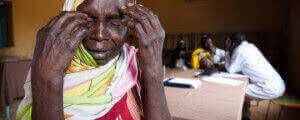 Dying and despairing in Darfur
Dying and despairing in DarfurNearly 21,000 new displaced verified in North Darfur
“More people are fleeing their homes as a result of ongoing fighting between government forces and armed movements in parts of Darfur,” OCHA in Sudan stated in its latest weekly bulletin, released today. The UN agency states that humanitarian organisations have assessed and verified more than 20,700 newly displaced in North Darfur who fled their homes since December 2014. “This figure,” the bulletin reads, “is expected to increase further as reports received from Um Baru locality in North Darfur indicate a considerable increase in the number of new IDPs (Internally Displaced Persons, RD) seeking shelter near the United Nations-African Union Mission in Darfur (UNAMID) Um Baru base.”
This account is largely confirmed by an urgent UNICEF press release (see below). It has always been the case that mortality in Darfur is frequently the direct result of flight from violent assaults on villages and camps: dehydration can kill quickly in this arid land; exposure to the sometimes very cold night temperatures is also often fatal, especially to young children; and some—the elderly and infirm especially—cannot make what is often a dangerous and arduous trip to the nearest camp—ER.
• UNICEF Press Release, January 29, 2015
Sudan: UNICEF Emergency Supplies Flown in As Crisis Worsens in Darfur
Khartoum — UNICEF flew in today emergency supplies in response to the growing influx of displaced persons into Um Baru locality, north east of the State capital, El Fasher, in North Darfur. Over the last two weeks some 4,000 additional people have arrived to the locality, most of them are women and children. Their number continues to increase daily. “The deepening humanitarian crisis in Darfur is worrying,” said Geert Cappelaere, UNICEF Representative in Sudan. “Children have no responsibility in any of the conflict, but are at risk of having both their present and future jeopardized.”
We will certainly see more such reports in the coming months and beyond. Last year 500,000 people were newly displaced in Darfur (http://wp.me/p45rOG-1zc), and this year promises to be worse (this continues a trend that began in 2012; in 2013 more than 400,000 people were newly displaced—see http://wp.me/p45rOG-12V).
At the same time aerial attacks on civilian targets continue with undiminished savagery—ER:

• Golo burns as air raids on Darfur’s Jebel Marra continue, Radio Dabanga, 27 January 2015 | Jebel Marra
A number of houses and farmlands near Golo, west of Jebel Marra, Central Darfur, were torched this morning. In Tawila locality, North Darfur, elements of the paramilitary Rapid Support Forces (RSF) removed the engines of three water wells on Monday. Speaking to Dabanga, villagers who fled from Golo said that an Antonov of the Sudanese Air Force began bombing the area early this morning. No casualties were reported, but the explosions started fires that burned a number of houses in Dorsa village, and several farms in the area of Golo. A camp sheikh at Nierteti North camp said that people displaced by the air raids and attacks by government forces on Golo and the surrounding villages on Sunday, continue to arrive at the Nierteti camps.
He reported that a girl from Golo, Asraa Ibrahim, and Ibrahim Daldoul from Guldo, were injured during heavy shelling of the area by militia forces on Monday. “They were transferred to a hospital in Zalingei for treatment.”
“Crime against humanity”
In Tawila locality, popularly known as East Jebel Marra, RSF troops removed the main engines of the water wells in the area of Nemra, Kira, and Dady. “They loaded the engines on their vehicles, and left,” several residents of the area told Dabanga. They called the action a “crime against humanity,” saying that “the government intends to displace the entire population of Jebel Marra.”

Some of the actions by the RSF are clearly designed to making living impossible in certain areas; eastern Jebel Marra has been a particular target. One of the surest ways to displace people is to poison, destroy, or remove the means for supplying water. Displacement is also ensured by Khartoum’s regular armed forces and their relentless bombing of a great many civilian locations in Darfur, but most intensely in Jebel Marra. Every single aerial attack is a direct violation of the terms of UN Security Council Resolution 1591 (March 2005—ten years ago) concerning military flights by Khartoum within Darfur. There have been many, many hundreds of such violations (see www.sudanbombing.org). Khartoum continues with impunity, despite multiple reports from the various UN Panels of Experts on Darfur tasked with monitoring the banning of military flights—ER.
• Boy dies as Sudanese MiG strafes Jebel Marra farms, Radio Dabanga, 26 January 2015 | East Jebel Marra
A boy was killed in an air raid on farmlands near Khazan Tunjur in East Jebel Marra today. About 56 families from the area, who arrived at the Kabkabiya camps in North Darfur, are in dire need of aid. A farmer told Dabanga from Khazan Tunjur that Abdelgader Omar (8) from Goz Dor village was killed, when a bomb dropped by a MiG fighter jet of the Sudanese Air Force exploded near to him. He and other sources reported that at the same time, an Antonov bombarded the area south and west of Deribat. Some 56 families who fled attacks by the paramilitary Rapid Support Forces on their villages in East Jebel Marra, reached the camps for the displaced near Kabkabiya town, last week. A sheikh of El Salam camp A in Kabkabiya told Dabanga that the camp coordinators submitted a list with the names of the newly displaced to representatives of the UN World Food Programme, the Sudanese Humanitarian Affairs Commission, and the Sudanese Red Crescent, but “up to now, no relief has been provided.”
***********
Other dispatches from Radio Dabanga over the past week suggesting just how critical the security and humanitarian situation has become in all regions of Darfur. This list is far from comprehensive:
• 2 February 2015:
https://www.dabangasudan.org/en/all-news/article/more-bombs-fall-on-golo-central-darfur
• 2 February 2015:
• January 30, 2015:
• 29 January 2015:
• 25 January 2015:

